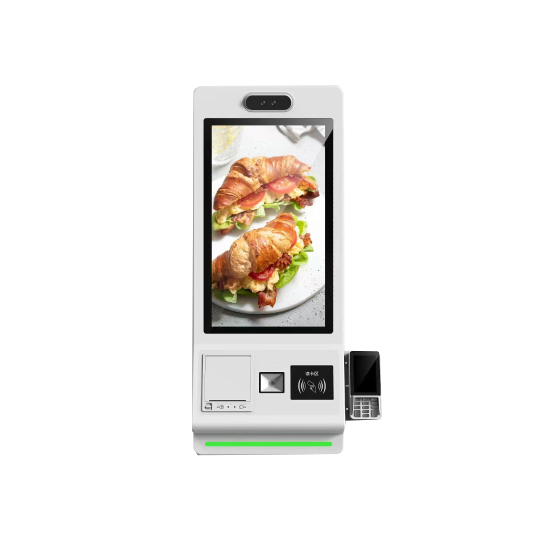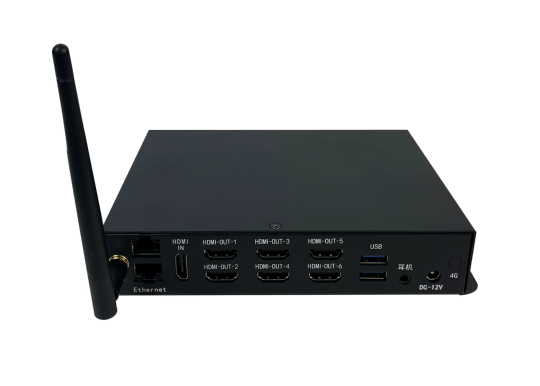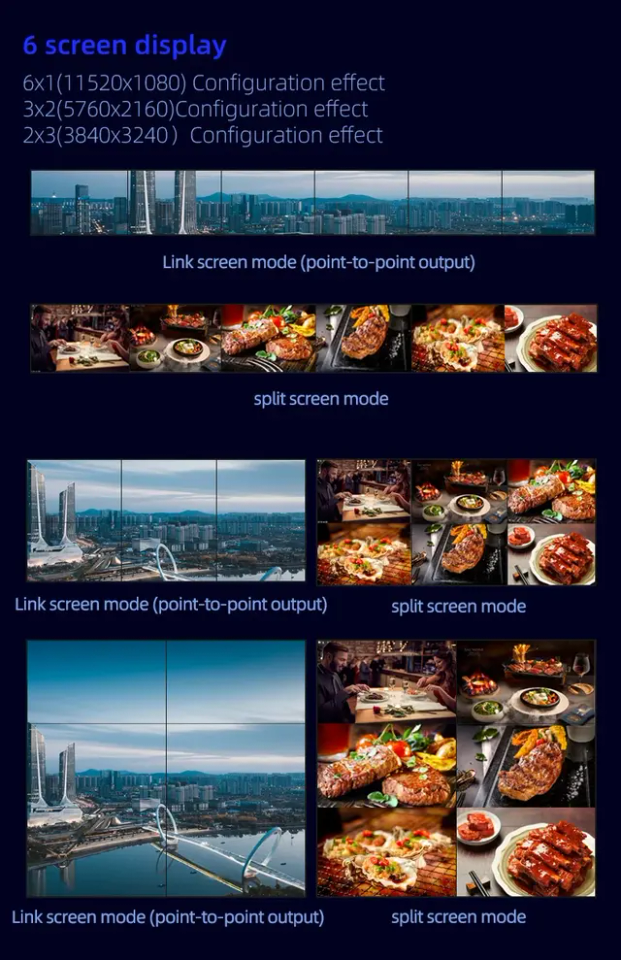#Ethernet speaker system
Explore tagged Tumblr posts
Text
Digital Podiums: Revolutionizing Presentations in the Modern Era
In the age of rapid technological advancement, traditional tools are being replaced by smart, tech-savvy alternatives. One such innovation that has significantly impacted the realm of presentations and public speaking is the digital podium. Whether in educational institutions, corporate settings, or public venues, digital podiums are transforming the way information is delivered and received. Let’s delve into the features, benefits, and reasons why digital podiums are becoming indispensable in today’s world.
What is a Digital Podium?
A digital podium is an advanced version of the traditional lectern. It integrates various technologies, such as touchscreen displays, built-in microphones, and audio systems, to enhance the presenter’s experience. Designed to offer seamless integration with multimedia content, digital podiums are the perfect blend of simplicity and sophistication.
Key Features of a Digital Podium
1. Touchscreen Interface
One of the standout features of digital podiums is the large, interactive touchscreen display. This allows presenters to:
Navigate through slides effortlessly.
Annotate content in real-time.
Access multimedia files with a single touch.
2. Integrated Audio System
Digital podiums are equipped with built-in microphones and high-quality speakers, ensuring clear audio delivery to the audience. Many models also include noise-cancellation features for a professional-grade audio experience.
3. Compatibility with Multiple Devices
Modern digital podiums support connections with laptops, tablets, and USB drives. This ensures flexibility and ease of use, regardless of the presenter’s preferred device.
4. Internet Connectivity
Wi-Fi and Ethernet connectivity enable users to access online resources, stream videos, or download additional materials directly from the podium.
5. Adjustable Design
To cater to presenters of different heights and preferences, many digital podiums feature height-adjustable designs. This ensures a comfortable experience for all users.
6. Robust Security Features
Digital podiums often include password-protected access and encrypted data storage, ensuring that sensitive information remains secure.
7. Multi-Language Support
For institutions and organizations with diverse audiences, digital podiums offer multi-language interfaces, making them accessible to users worldwide.
8. Built-in Lighting
Integrated LED lighting enhances visibility for documents or notes during presentations, especially in dimly lit environments.
9. Recording and Streaming Capabilities
With built-in cameras and software, digital podiums allow presenters to record their sessions or stream them live. This is especially beneficial for hybrid and virtual events.
10. Durable and Sleek Design
Constructed with high-quality materials, digital podiums are designed to withstand frequent use while maintaining a modern and professional appearance.
Benefits of Using a Digital Podium
Enhanced Engagement
Digital podiums make presentations more interactive, captivating the audience’s attention with visuals, videos, and real-time annotations.
Time Efficiency
By consolidating multiple functionalities in one device, digital podiums save setup time and allow presenters to focus on delivering their message effectively.
Accessibility for All
Features like adjustable height and multi-language support ensure that digital podiums are user-friendly for people of all abilities and backgrounds.
Professionalism
The sleek design and advanced features of a digital podium enhance the presenter’s credibility and make a lasting impression on the audience.
Environmentally Friendly
By minimizing the need for printed materials, digital podiums contribute to sustainability efforts and reduce paper waste.
Applications of Digital Podiums
Educational Institutions
In classrooms and lecture halls, digital podiums revolutionize teaching by integrating multimedia content, enabling virtual lectures, and facilitating interactive learning sessions.
Corporate Meetings
For business presentations, digital podiums offer a polished and efficient way to communicate ideas, showcase data, and engage stakeholders.
Conferences and Seminars
Digital podiums are ideal for large events, ensuring seamless transitions between speakers and consistent audio-visual quality throughout the sessions.
Houses of Worship
In religious settings, digital podiums enhance the delivery of sermons and announcements with audio-visual support.
Public Venues
Digital podiums are increasingly used in public addresses, exhibitions, and cultural events, offering versatility and efficiency in diverse scenarios.
Top Considerations When Choosing a Digital Podium
1. Ease of Use
Opt for a digital podium with an intuitive interface that minimizes the learning curve for users.
2. Compatibility
Ensure the podium is compatible with the devices and software commonly used in your organization.
3. Portability
If the podium needs to be moved between locations, consider a lightweight and mobile model.
4. Customization Options
Some manufacturers offer customization features, such as branding and color choices, to align with organizational identity.
5. Warranty and Support
Choose a reliable vendor that provides a comprehensive warranty and excellent customer support to address any technical issues.
Future Trends in Digital Podiums
1. AI Integration
Future digital podiums may include AI-powered features such as speech-to-text, real-time language translation, and personalized content recommendations.
2. Advanced Analytics
Data analytics capabilities will provide insights into audience engagement, helping presenters refine their techniques.
3. Enhanced Connectivity
With the rise of IoT, digital podiums may integrate with other smart devices to create a cohesive technological ecosystem.
Conclusion
Digital podiums are not just a tool; they are a game-changer in the way we communicate, teach, and present. Their versatility, combined with cutting-edge features, ensures that they remain at the forefront of modern presentation technology. Whether you’re an educator, a business leader, or a public speaker, investing in a digital podium is a step toward enhanced professionalism and efficiency.
#DigitalPodium #PresentationTechnology #TechForEducation #SmartLecterns #CorporatePresentations #InteractiveLearning #PublicSpeakingTools #ModernClassrooms #TechInnovation #SustainablePresentations

2 notes
·
View notes
Text
What’s New in Wireless DJ Equipment? The Future of Cables and Connectivity
Wireless technology is revolutionizing the DJ world by reducing the dependency on cumbersome cables, offering more flexibility, and streamlining setups. Innovations in wireless DJ equipment are paving the way for seamless performances and enhanced creativity. Here's a look at the latest trends and developments in this field.

1. Wireless Audio Transmission
Gone are the days of tripping over long XLR cables. Modern wireless audio transmission systems allow DJs to connect mixers, speakers, and other equipment without physical connections. These systems use proprietary low-latency radio signals that maintain high audio quality and reliability, even in challenging environments like outdoor events or large venues. Such advancements significantly reduce setup time and improve mobility during performances.
2. Low-Latency Wireless Headphones
Latency has long been a barrier to using wireless headphones for DJing. Recent innovations, like proprietary wireless links, enable DJs to use high-quality headphones without audio lag. These systems are especially useful for performers who move around during their set or prefer freedom from cables while maintaining studio-quality sound. This innovation has been embraced not just for live performances but also in studio environments, providing artists with the flexibility to focus on creativity.
3. Bluetooth for MIDI Controllers
While Bluetooth is generally unsuitable for high-quality audio due to latency issues, it is making inroads in transmitting MIDI data. Modern controllers can now wirelessly connect to devices like tablets and laptops, making DJ setups more portable and user-friendly. For instance, some entry-level controllers use Bluetooth for MIDI signals while maintaining audio through a traditional cable to ensure minimal latency.
4. Wireless Streaming Integration
With built-in Wi-Fi and Ethernet capabilities, advanced DJ gear can directly access online streaming platforms. This feature allows DJs to access vast music libraries without needing external devices. However, reliability remains a concern, as a stable internet connection is crucial for uninterrupted performance. As technology progresses, we can expect more robust solutions to these challenges.

5. All-in-One Wireless DJ Systems
The trend toward compact, integrated setups continues to grow. All-in-one wireless DJ systems combine controllers, mixers, and sound systems, eliminating the need for external connections. These systems are perfect for mobile DJs and smaller venues, offering convenience without compromising performance.
Benefits of Wireless DJ Equipment
The adoption of wireless technology in DJ equipment offers several advantages:
Portability: Reduced reliance on heavy cables makes transportation easier.
Flexibility: DJs can move freely during performances, enhancing stage presence.
Simplified Setup: Faster setup times allow for more time to focus on the music.
Aesthetic Appeal: Cable-free setups look professional and uncluttered.
Challenges to Overcome
Despite the advancements, challenges like latency, interference, and dependence on reliable power sources still exist. Innovations in battery technology and signal processing are critical for overcoming these hurdles and achieving wider adoption.
Wireless DJ equipment is shaping the future of performances, providing a glimpse of a more connected, cable-free era. As these technologies evolve, investing in equipment from professional and reputable audio shops like VIP PRO AUDIO ensures reliability, quality, and expert support for a smooth transition into the world of wireless DJing.
#audio#audio gear#music#dj#musician#professional audio#brooklyn#audio shop in brooklyn#wireless#wireless audio#bluetooth
3 notes
·
View notes
Text
ANYWAY 21.5" Self-Order Payment Kiosk with Touch Screen, Printer, QR Code Scanner for Restaurants

Features: - 21.5" Full HD Display: Large LED backlight panel with 1920x1080 resolution for clear and vivid touch screen interaction. - Capacitive Multi-Touch: 10-point capacitive touch technology allows fast and accurate user input, perfect for self-ordering systems. - Built-In Printer & QR Scanner: Features a 3-inch thermal printer and QR code scanner for streamlined order placement and payment processing. - Face Recognition & Payment: Supports face recognition for enhanced security and seamless contactless payment options. - Versatile Connectivity: Equipped with WiFi, RJ45 Ethernet port, and various I/O ports for integration with other devices and software. - Durable Design: Industrial-grade structure, suitable for continuous use in high-traffic environments like restaurants, malls, and cafes. Specifications: - Display: 21.5" LED, 1920x1080 resolution - Processor: Intel Celeron J6412 (fanless) - Storage: 128GB SSD - Memory: 4GB - Graphics: Intel integrated graphics - Printer: 3-inch thermal printer, 200mm/sec speed, autocutter - Speakers: 5W internal speaker - I/O Ports: 6x USB, 1x LAN (RJ45), 6x Serial (DB9x3, RJ50x2, RJ11x1) - Operating System: Windows 10 IoT Enterprise / Windows 11 - Power Supply: 12V/5A, 24V/1.75A Read the full article
1 note
·
View note
Text
[Image descriptions in order: a tweet by @AdamBlumenau "Radmad" which says "Genuinely amazing how uncurious these guys are regarding why things are done the way they've been done. "Move fast and break things" has ruined an entire generation of engineers.
They are replying to a tweet by @cybrtrkguy "The Cybertruck Guy" (verified). The contents of the tweet are cut off, but attached are two images of 3D models of the insides of cars. On the left is a regular car, showing a multitude of red wires running through the whole frame, connecting to each part. On the right is an image of the Cybertruck, which shows one main blue wire running through the middle. There are several red portions of the car showing electronic components that the single wire connects to.]
[The tweet by The Cybertruck Guy, which says "You know how cars have huge wiring harnesses? That's because each component needs its own set of wires, connected to the central ECUs, in order to function. Every speaker, every switch, every sensor, every actuator, every button. Tesla threw out that entire system for Cybertruck. Instead, they're running gigabit ethernet cabling with a 48v power + data CAN bus to every component- all on the same cable."]
[The rest of the tweets are replies to Adam Blumenau's response. They are:
"Radmad": Astronauts landed on the moon using altitude markers hand-etched on the window and now we can't get a rocket off the pad without blowing it up]
[@Cyanide_Patch "Skoden ✊🏽": the single point of catastrophic failure is a feature
@AdamBlumenau "Radmad" responds "I want my car to have weak points like a Zelda boss".]
[@max_spero "Max Spero" (verified): I have a friend whose Tesla Model Y suddenly lost power steering in the middle of a drive. Every single warning was going off at the same time. Took 3 service appointments before they found a single loose connection that caused all of it.]
[@spicyboi8885h "🌶️spicyboi": > engineering take from a vidya game designer
@icryaboutlife "dzs🇭🇺": Move fast break things is great for certain use cases. Like rockets. Thinking it applies well to everything is a mistake tho]
[@chub_chub44 "sworddog44": "You know those cheap Christmas lights that pissed off your mom because if one bulb burnt out every bulb behind it didn't work? We are using those to power this truck."]
[@TheNerdy... "Michael Roberts": Love it when 75% of my car stops working because there's a fault in my window and no steering means I cause an accident at highway speeds but I don't have to deal with any of that because my spine was turned to paste from the lack of crumple zones and I was killed instantly.]
[@PaulSillanpaa "Paul Sillanpää": This is sounding like the hype for that Titan sub that went down a few months ago. "Nobody has ever designed a sub like this before!" "And you didn't ask why?"]









#dude thats horrifying#keep that shit off the roads#feel free to copy n paste the id#cars#cybertruck
42K notes
·
View notes
Text
Price: [price_with_discount] (as of [price_update_date] - Details) [ad_1] From the brand Commitment To Quality Cat6 Ethernet cable Cable Power Cord Cable High Quality Power Strip Power Adaptor USB Cable ▶ FEATURES / POWER SPECS - 18AWG large wire gauge for heavy duty use Compatible up to 10amp devices, a fully molded design for maximum durability, and long-life Female to male cable connects from your equipment socket to a standard 3 pin 120V~240V AC outlet receptacle, It Is Convenient to Be A Replacement for The Overused, Old, Broken or Damaged Power Cord, or misplaced power cable or add extra distance / extension between devices for convenience. ▶UNIVERSALLY COMPATIBLE - Fits almost anything that uses a three-pin power connection Will fit all brands Computer Desktop PC, Gaming CPU, TV, Monitor, Game Console, scanners, PSU, Laser 3D Printer, Projector, Server, Guitar Amp, Amplifier, Subwoofer, AV Receiver, Sports Equipment, Treadmill, Pressure Cooker, Speaker System, LCD Plasma DLP Screen ceiling mounted projector, powered speakers and other appliances with similar plug. ▶SAFE & RELIABLE - Made with high-quality materials, Overheat, Over Current, Over Voltage and Short Circuit Protection, it is Safe and Reliable to Use, Durable Fully molded design, resilient, maximum safety, durability and long life cord is made of PVC material, it has the advantages of environmental protection, waterproof, wear resistance, etc. After more than 10,000 bending tests, it has good Conductivity and stability and has long service. ▶HEAVY-DUTY - 18AWG - Plug computers and peripherals into a standard outlet. This power cord is the ideal solution for powering a PC or peripheral device in applications that require higher-rated, heavier-gauge cabling ▶1 YEAR REPLACEMENT WARRANTY - 1 Year manufacturer warranty and product support provide peace of mind when purchasing, Each Power Cord goes through rigorous testing to ensure a secure wired connection If for any reason you are not satisfied with the item, you will get a replacement [ad_2]
0 notes
Text
Redefining Home Cinema with Smart Technology
The Evolution of Home Entertainment
The way we experience movies at home has transformed dramatically over the past few decades. From the days of bulky VHS tapes to the era of streaming services, each advancement has brought convenience and quality closer together. Today, the pursuit of a theater-like experience at home has led to the development of sophisticated devices that prioritize both visual and auditory excellence. Among these, a standout 4K movie player has emerged, designed to deliver unparalleled picture and sound quality. This device, known as the Kaleidescape Strato V, represents a pinnacle in home entertainment technology, offering a seamless blend of high-fidelity playback and intuitive design. Its ability to store and play movies with lossless audio and Dolby Vision support sets it apart from conventional streaming boxes, making it a favorite among cinephiles who crave authenticity in their viewing experience.
Unpacking Premium Movie Playback
The essence of a great home cinema lies in its ability to replicate the magic of a commercial theater. This is where advanced movie players shine. With a sleek black anodized aluminum finish, this particular device not only performs exceptionally but also adds a touch of elegance to any setup. It supports 4K Ultra HD playback with bit rates up to 100 Mbps, ensuring that every frame is crisp and every color vibrant. The inclusion of Dolby Vision and HDR10 means that viewers can enjoy movies as directors intended, with dynamic contrast and vivid hues. Additionally, its 960GB solid-state drive can store approximately ten high-bitrate 4K movies, making it a standalone solution for those starting their digital collection. For those seeking to expand, the device can connect to larger servers, unlocking a vast library and multi-room playback capabilities. This scalability ensures that the system grows with the user’s needs, providing a future-proof investment in entertainment.
The Role of Smart Home Integration
A modern home cinema is not just about the screen and speakers; it’s about creating an immersive environment where every element works in harmony. Smart home technology has become a key player in this space, allowing users to control lighting, shades, and even seating with a single command. Voice assistants have revolutionized how we interact with our homes, offering hands-free control that enhances convenience. The cost of such advanced voice control systems, often referred to as the Josh AI price, varies depending on the complexity of the installation and the number of connected devices. These systems integrate seamlessly with premium movie players, enabling users to start a movie, dim the lights, and adjust the sound with a simple voice prompt. This level of integration transforms a living room into a cinematic sanctuary, where technology fades into the background, and the story on screen takes center stage.
Designing the Ultimate Viewing Experience
Creating a home theater that rivals professional setups requires careful consideration of both hardware and software. The movie player in question offers a streamlined interface optimized for navigating small libraries, with downloads completing in as little as ten minutes over gigabit Ethernet. Its compatibility with advanced control protocols allows it to sync with various home automation systems, ensuring a cohesive experience. The player’s lossless audio support, including formats like Dolby Atmos and DTS:X, delivers sound that envelops the viewer, from the subtlest whisper to the most explosive action sequence. For those investing in smart home technology, the ability to automate environmental settings enhances the experience further. While the upfront cost of such systems may seem significant, the value lies in their ability to deliver consistent, high-quality entertainment tailored to individual preferences.
Why Quality Matters in Home Cinema
In an age where streaming services dominate, the difference between compressed and lossless content is stark. Standard streaming often sacrifices quality for bandwidth, resulting in buffering or reduced detail. In contrast, downloading high-bitrate movies ensures flawless playback, free from interruptions. This commitment to quality is what drives enthusiasts to invest in premium systems. The movie player’s ability to upscale HD and SD content to 4K resolution means that even older films look stunning on modern displays. Coupled with smart home integration, where voice commands can fine-tune the ambiance, the result is an experience that feels bespoke. The cost of advanced voice control, while a consideration, is justified by the ease and precision it brings to managing complex setups, making every movie night feel like a special event.
The Future of Home Entertainment
As technology continues to evolve, the boundaries of what’s possible in home cinema expand. Devices like the 4K movie player discussed here are paving the way for a future where quality and convenience coexist effortlessly. Its recognition with prestigious design awards highlights its blend of form and function, appealing to both tech enthusiasts and aesthetes. Similarly, advancements in voice-activated smart home systems promise even greater personalization, with costs becoming more accessible as adoption grows. Together, these technologies are redefining what it means to watch a movie at home, turning passive viewing into an active, immersive experience. For those who value the art of filmmaking, investing in such systems is not just about entertainment—it’s about preserving the integrity of the cinematic vision in the comfort of one’s own space.
Find out more today, visit our site.
epic sound system price
epic extended warranty terra8
0 notes
Text
Top 5 HP All-in-One Desktops Compared: Features, Specs & Value
When it comes to desktop computers, HP Desktop Computers are known for their quality, design, and performance. In 2025, HP continues to impress with a range of all-in-one (AiO) desktops perfect for home users, students, and business professionals. If you’re looking for a computer that combines everything into one neat package, an HP AiO desktop might be just what you need.
This article breaks down the top 5 HP all-in-one desktops available today. We’ll cover their key features, performance, and value, so you can choose the one that fits your needs.
1. HP OmniStudio X – The Smart, High-Tech Powerhouse
The HP OmniStudio X is a cutting-edge desktop, packed with smart features and high-quality components. It’s the world’s first desktop with Windows Copilot+, announced at CES 2025.
Key Features:
Screen: You can pick between a 27-inch or a larger 32-inch display, with full HD or 4K resolution. The screens reduce glare, making it easier on your eyes.
Processor: Powered by the latest Intel Ultra processors, it’s fast and reliable.
Memory & Storage: Comes with up to 32GB of RAM and 2TB of fast storage.
Graphics: Uses Intel Arc graphics, great for everyday use and creative work.
Smart Features: Includes Windows Recall (a feature that helps find past tasks), Studio Effects for better video calls, and a sensor that detects when you’re nearby.
Connections: Has multiple USB-C and USB-A ports, HDMI ports, Wi-Fi 7, and even Ethernet for a wired connection.
Pros:
Excellent for creative professionals who need a powerful computer.
High-quality display options.
Smart AI features make multitasking easier.
Cons:
On the pricey side.
No touchscreen option.
Who It’s Best For: Creatives, designers, and tech enthusiasts looking for a top-of-the-line computer.
2. HP EliteOne 870 G9 – Built for Business Users
The HP EliteOne 870 G9 is made for business professionals who want a reliable, secure, and eco-friendly desktop. It’s designed with performance and sustainability in mind.
Key Features:
Screen: 27-inch QHD (high-definition) display with anti-glare coating.
Processor: Choose between an Intel i5 or i7 processor for smooth performance.
Memory & Storage: Comes with 16GB of RAM and 512GB of storage.
Security: Packed with advanced security tools to keep your data safe.
Design: Made using sustainable materials and certified for energy efficiency.
Pros:
Strong security features make it great for business use.
High-quality display and sound.
Environmentally friendly design.
Cons:
Not ideal for heavy graphic work like gaming or video editing.
Who It’s Best For: Business users and companies that need a secure, reliable desktop.
3. HP Pavilion All-in-One 24-xa0125st – Great for Home Use
The HP Pavilion 24-xa0125st is a stylish and functional desktop that works well for homes. It’s perfect for daily tasks like browsing, streaming, and light work.
Key Features:
Screen: 23.8-inch touchscreen with full HD resolution.
Processor: Uses an Intel Core i7 for fast and smooth performance.
Memory & Storage: Comes with 8GB of RAM and a large 1TB hard drive.
Graphics: Basic integrated graphics, with an option to upgrade to an NVIDIA card.
Audio: High-quality speakers by Bang & Olufsen.
Extras: Includes a wireless keyboard and mouse.
Pros:
Touchscreen makes it easy and fun to use.
Good sound quality.
Modern, attractive design.
Cons:
Hard drive may be slower compared to newer SSD options.
Who It’s Best For: Families and individuals who want a stylish desktop for everyday use.
4. HP ProOne 600 G4 – Reliable and Simple for Business
The HP ProOne 600 G4 is designed for small to medium-sized businesses. It’s a reliable desktop that covers all the basics without any extra complications.
Key Features:
Screen: 21.5-inch full HD touchscreen with anti-glare.
Processor: Runs on an Intel Core i5 for solid performance.
Memory & Storage: Comes with 8GB of RAM and a 1TB hard drive.
Graphics: Basic integrated graphics.
System: Pre-installed with Windows 10 Pro.
Connections: Plenty of ports including HDMI, USB, and DisplayPort.
Pros:
Touchscreen for easy interaction.
Multiple ports for connecting devices.
Comes with Windows 10 Pro, which is great for businesses.
Cons:
Slower hard drive compared to SSDs.
Who It’s Best For: Businesses needing a simple, reliable desktop for office tasks.
5. HP All-in-One 24-cr0477in – Budget-Friendly Everyday Desktop
The HP 24-cr0477in is a great choice if you’re looking for an affordable desktop that still offers good performance for daily tasks.
Key Features:
Screen: 23.8-inch full HD screen with thin bezels.
Processor: Runs on Intel Core i5 for smooth multitasking.
Memory & Storage: Comes with 8GB of RAM and a fast 512GB SSD.
Graphics: Integrated graphics for basic needs.
System: Windows 11 Home installed.
Extras: Comes with a wireless keyboard and mouse, and a webcam with privacy controls.
Pros:
SSD storage means faster performance.
Modern design with slim edges.
Good price for its features.
Cons:
Not meant for heavy gaming or advanced creative work.
Who It’s Best For: Students, families, or home users needing an affordable desktop for everyday tasks.
Conclusion: Which One Should You Choose?
HP offers a wide range of HP Desktop Computers, so there’s something for everyone. Whether you’re a creative professional who needs top performance, a business owner needing strong security, or a home user looking for a budget-friendly option, HP has you covered.
For the latest tech and AI features, the HP OmniStudio X is unbeatable.
If you’re a business user, the EliteOne 870 G9 offers top security and reliability.
For a home computer with style, the Pavilion All-in-One is a solid pick.
If you want business simplicity, the ProOne 600 G4 is dependable.
For a budget-friendly choice, go with the HP All-in-One 24-cr0477in.
For more information and a full range of HP Desktop Computers, visit Rackfinity. They offer great options for all your computing needs, whether it’s for work, school, or home.
0 notes
Text
HD USB KVM Extender
Buy the HD USB KVM Extender device of AV-9525 based on the standard IP technology beneficial to be configured as Video-Wall displays and highly effective for AV Broadcasting, Video-Wall applications, and KVM Matrix Control. The system comes with the Transmitter (TX) of AV-9525TL and Receiver (RX) of AV-9525R, wherein the TX converts input signals of audio, video, and USB to IP packets and Unicast (one-to-one) and Multicast (one-to-many) to Gigabit Ethernet switch. The RX, on the other hand, links to a speaker, display units, microphones, and USB devices, and receives IP packets from the Ethernet switch, converting them back to HDMI/DVI, and sending them to display units, USB devices, and speakers.
0 notes
Photo

Acer Aspire 3 N4500 Celeron® A315-35-C7ZB Notebook Choose the ready-to-go Aspire 3 with the latest 12th Gen Intel® Core™ Processors1 made for practical multitasking and productivity. With ease-of-use at its core, this family-friendly laptop is ready when you are. Ready-to-Go Performance The Aspire 3 is ready-to-go with the latest 12th Gen Intel® Core™ Processors1 with Iris® Xe Graphics—ideal for the entire family, with performance and productivity at the core. Perfect to get more out of work, study, or play. Improved Thermals With a 78% increase in fan surface area, enjoy an improved thermal system and an additional 17% thermal capacity3. Allowing for longer, more efficient work sessions while not plugged in4. Purposeful Design With a sleek metal cover1 available in new vibrant colors1, the Aspire 3 is lighter and thinner than ever before at 1.6kg1 and 18.9mm1. While a long-lasting battery allows for the family to get more done between charges. The Display The 1080p FHD1 display is perfect for casual web browsing and streaming videos, allowing for sharp, detailed images. And with Acer BlueLightShield™, lower the levels of blue light exposure to you and your loved ones. The Connectivity Connect or charge your newest devices on the full-function USB Type-C port. In addition, Wi-Fi 6E1,2 and HDMI 2.1 provide increased productivity and functionality for the whole family. SPECIFICATIONS Operating System Operating System: Windows 11 Home Single Language Processor Processor Intel® Celeron® N4500 1.10 GHz Dual-core (2 Core™) Display & Graphics Graphics: Intel® UHD Graphics Shared Screen Size: 39.6 cm (15.6") Display Screen Type: LCD Display Screen Technology: ComfyView (Matte) Twisted nematic (TN) Backlight Technology: LED Touchscreen: No Screen Resolution: 1920 x 1080 Standard Refresh Rate: 60 Hz Aspect Ratio: 16:9 Memory Total Installed System Memory: 4 GB System Memory Technology: DDR4 SDRAM Memory Card Reader: No Storage Total Solid State Drive Capacity: 256 GB Solid State Drive Interface: PCIe NVMe SSD Form Factor: M.2 Network & Communication Wireless LAN Standard: IEEE 802.11ac Ethernet Technology: Gigabit Ethernet Bluetooth Standard: Bluetooth 5.0 Built-in Devices Microphone: Yes Finger Print Reader: No Number of Speakers: 2 Sound Mode: Stereo Interfaces/Ports HDMI: Yes Number of HDMI Outputs: 1 Number of USB 2.0 Ports: 1 Number of USB 3.2 Gen 1 Type-A Ports: 2 Total Number of USB Ports: 3 Network (RJ-45): Yes Input Devices Pointing Device Type: TouchPad Keyboard: Yes Keyboard Backlight: No TouchPad Features Multi-touch Gesture Microsoft Precision Touchpad Certification Battery Information Number of Cells: 2-cell Battery Chemistry: Lithium Polymer (Li-Polymer) Maximum Battery Run Time: 9 Hours Battery Energy: 42 Wh Power Description Maximum Power Supply Wattage: 45 W Physical Characteristics Height: 1.99 cm Width: 36.34 cm Depth: 23.84 cm Weight (Approximate): 1.70 kg Product Color: Silver Miscellaneous Package Contents Aspire 3 A315-35-C7ZB Notebook AC Adapter Power Cord Lithium Polymer Battery Security Features Kensington lock slot BIOS Passwords: User Supervisor HDD
#LAPTOPS#NOTEBOOKS#STUDENT_LAPTOPS#4GB_RAM#ASPIRE_3#CELERON#DUEL_CORE#LAPTOP#N4500#NOTEBOOK#NX.A6LEA.00Q
0 notes
Text
The Rise of Mixed Gatherings and Required Technology

Introduction
In a world that flourishes on connectivity, the principle of hybrid meetings has emerged as a beacon of innovation and practicality. As the workplace evolves, so does the desire for seamless conversation instruments that bridge distances. Hybrid meetings mix in-grownup and remote participation, allowing groups to collaborate correctly notwithstanding their geographical position. But what technological know-how is required to make those meetings winning? This article dives deep into The Rise of Hybrid Meetings and Required Technology, exploring everything from basic video convention gadget to the preferrred practices for creating an beneficial hybrid meeting ecosystem.
The Rise of Hybrid Meetings and Required Technology Understanding Hybrid Meetings
Hybrid meetings are more than only a response to current international situations; they’re a critical shift in how we perceive collaboration. In those setups, some members are physically present in a convention room at the same time as others join remotely by means of video conferencing systems. This blend caters to multiple paintings types and alternatives, improving productivity like certainly not earlier.
Benefits of Hybrid Meetings Flexibility: Employees can decide upon no matter if to wait in grownup or practically. Cost-Effective: Companies shop on tour expenditures although still maintaining team brotherly love. Wider Talent Pool: Organizations can recruit proficiency from everywhere inside the international. Enhanced Collaboration: Participants can percentage screens, archives, and suggestions seamlessly. The Essential Video Conference Equipment
Video conferences hinge on know-how that ensures transparent audio and visible verbal exchange. To facilitate successful hybrid conferences, precise accessories is essential.
1. Cameras
High-definition cameras are the most important for taking pictures all individuals clearly. Options vary from fastened cameras to people with pan-tilt-zoom talents that can cognizance on speakers dynamically.
2. Microphones
Quality audio is paramount; to that end, investing in convention room audio video appliance with prime-constancy microphones will be certain anybody’s voice is heard basically—without reference to where they may be sitting.
three. Display Screens
Large monitors or projectors fortify visibility for in-room participants, making sure every body can see far flung colleagues at some point of discussions.
4. Connectivity Tools
Robust Wi-Fi connections and Ethernet selections are vital for minimizing disruptions all the way through conferences caused by negative information superhighway connectivity.
Conference Room Audio Video Equipment Essentials
To design an productive video conference room equipment hybrid assembly area, enterprises must invest accurately in convention room audio video tools that caters to equally far off and onsite attendees.
5. Speakers
Quality audio system aid distribute sound lightly across the room, making it less demanding for everybody to listen contributions from either
youtube
0 notes
Text
Decoding CCTV Costs in NZ: Budgeting for Your Home or Business Security System
In today's world, security is a top priority for both homeowners and business owners in New Zealand. Protecting your property, assets, and people provides invaluable peace of mind. CCTV (Closed-Circuit Television) systems are a cornerstone of modern security, acting as a powerful visual deterrent, providing crucial evidence in case of incidents, and allowing for remote monitoring.
If you're considering installing a CCTV system, whether for your home or business, one of the first and most significant questions is: how much will it actually cost?
Understanding the investment required for a CCTV system goes beyond simply looking at the price of cameras online. A complete, effective system involves various components and, crucially, professional installation tailored to your specific property. Costs can vary significantly based on the system's complexity, the number of cameras needed, and the type of technology chosen.
This article aims to provide a detailed breakdown of CCTV system costs in NZ, decoding the price tag associated with the hardware components and the vital factor of professional installation labour. We'll explore how different factors influence the final price and offer typical cost ranges for standard setups to help you budget effectively for your security investment.
Why Invest in CCTV Security? (Beyond the Cost)
Before we delve into the numbers, let's quickly recap the value proposition that justifies the investment in CCTV:
Deterrence: Visible cameras are a major deterrent to potential intruders or vandals.
Evidence: Recorded footage provides invaluable evidence for police and insurance claims in case of theft, vandalism, or other incidents.
Monitoring: Allows you to check on your property remotely via smartphone or computer.
Peace of Mind: Knowing your property is being monitored provides reassurance.
A CCTV system is an active layer of defence and vigilance for your property.
The Components: Breaking Down CCTV Hardware Costs
A functional CCTV system is typically made up of several key hardware components, each contributing to the overall cost:
Cameras: These are the 'eyes' of your system. Their cost varies dramatically based on type and features.
Price Range (Indicative per Camera):
Basic (Indoor only, low resolution, limited night vision): $50 - $150+ per camera
Mid-Range (Outdoor rated, 2MP-4MP resolution, good IR night vision, basic motion detection): $150 - $400+ per camera
High-End (4K+ resolution, advanced analytics, long-range IR, specialised types like PTZ - Pan/Tilt/Zoom, anti-vandal, covert): $400 - $1,500+ per camera (PTZ and specialist cameras can be several thousand dollars each)
Factors Influencing Camera Price:
Resolution: Higher resolution (e.g., 4K/8MP) costs more than lower resolution (e.g., 2MP/1080p) but provides clearer images allowing for better detail (e.g., facial recognition, license plates).
Features: Analytics (object detection, line crossing), audio capabilities (microphone, speaker), built-in storage (SD card slot), Wide Dynamic Range (WDR - for challenging lighting), advanced night vision technologies increase price.
Durability & Type: Outdoor cameras require weatherproofing (IP rating) and sometimes vandal resistance (IK rating), adding cost. Different camera types (dome for discreet indoor/outdoor, bullet for obvious deterrence/longer range, PTZ for controllable view) have different price points reflecting their complexity and features.
Recorder (NVR/DVR): This is the central hub that receives video feeds from the cameras, processes them, allows live viewing, and manages recording to storage.
DVR (Digital Video Recorder): Used for older analog cameras or newer Analog HD cameras (transmit video over coaxial cable).
NVR (Network Video Recorder): Used for IP cameras (transmit video over network/Ethernet cable). Generally more powerful and more expensive than DVRs for the same number of channels but support higher resolutions and advanced IP camera features.
Price Range (Indicative): Varies based on the number of camera channels it supports (e.g., 4, 8, 16, 32 cameras) and its processing capabilities/features.
4 or 8 Channel Basic DVR/NVR: $200 - $500+
8 or 16 Channel Mid-Range NVR/DVR: $500 - $1,200+
16+ Channel High-End/Commercial Grade NVR/DVR: $1,200 - $5,000+ (or significantly more for large enterprise systems)
Storage (Hard Drives): Video footage needs to be stored, typically on Hard Disk Drives (HDDs) installed within the NVR or DVR.
Price: Based on storage capacity, measured in Terabytes (TB). Surveillance-grade HDDs (designed for continuous recording) are recommended and cost more than standard PC drives.
Factors Influencing Storage Needs: The number of cameras, their resolution, recording quality (compression settings), frame rate (frames per second), whether you record continuously or only on motion detection, and how many days or weeks of footage you wish to retain. More cameras, higher resolution, continuous recording, and longer retention times require significantly more storage capacity, increasing costs.
Indicative HDD Cost (Surveillance Grade): Expect to pay roughly $150 - $300+ for a 2TB or 4TB drive. Larger drives (6TB, 8TB, 10TB+) cost proportionally more.
Cabling and Connectors: For wired systems, cables are needed to transmit video (and often power for IP cameras over Ethernet via Power over Ethernet - PoE).
Cost: Depends on the type of cable (coaxial + power vs. Ethernet/network cable), the total length of runs needed for all cameras back to the recorder, and the cost of connectors, junction boxes, conduit, etc. More cameras and larger properties require significantly more cabling, adding cost.
Power Supplies: Cameras need power. This can be provided centrally via the recorder (PoE for IP cameras) or via separate power supplies/injectors.
The Installation Factor: Labour Costs and Expertise
Once you have the components, they need to be installed and configured correctly. Professional installation labour is a significant, often equal to or exceeding the hardware cost, component of the total price, and for good reason.
Why Professional Installation is Costly (and Highly Recommended):
Work at Height: Cameras are often installed high up on exterior walls, under eaves, or on poles for optimal viewing angles and security. This requires working safely at height, using ladders or potentially scaffolding.
Running Cables: This is a major labour component for wired systems. Cables need to be run neatly and discreetly from each camera location back to the recorder. This involves feeding cables through walls, ceilings, crawlspaces, roof cavities, or within conduit externally. It requires skill, specialised tools (fish tapes, cable pullers), and time to avoid damaging the building structure and achieve a tidy result.
Electrical Work: While low voltage cabling (like network cable) doesn't always require an electrician for the cable run itself, connecting power supplies, integrating with existing electrical circuits, or ensuring compliance requires expertise. Many reputable security installers are qualified electricians or work directly with them, ensuring all electrical connections are safe and compliant with NZ standards. This is crucial for safety and avoiding legal issues.
Optimal Placement and Aiming: Professionals know where to position cameras to maximise coverage, minimise blind spots, avoid glare, and ensure they are angled correctly for the intended purpose (e.g., capturing faces at an entry point). Poor placement can render cameras useless.
System Configuration: Configuring the recorder (setting up recording schedules, motion detection zones, remote access via network/internet, user permissions), integrating with network settings, and ensuring everything is working optimally requires technical knowledge.
Weatherproofing: Outdoor cameras and their connections need to be properly sealed and protected from the elements to ensure longevity and reliability. Poor weatherproofing leads to premature failure.
Safety and Compliance: Working with electricity and at height carries risks. Qualified installers adhere to safety protocols and ensure the installation complies with all relevant NZ standards and codes.
Role of a Qualified Electrician: Any work involving connecting a CCTV system's power supply directly to the mains wiring, installing new power points, or making connections that fall under regulated electrical work in NZ must be performed by a registered electrician.
Firms like Redline Electrical, being qualified electricians with security system experience, can provide a comprehensive service ensuring both the security system installation and any necessary electrical work are done safely and compliantly.
Indicative Professional Installation Labour Cost: This is highly variable per camera point based on the difficulty of the cable run and access. Expect rates ranging roughly from $150 - $400+ per camera point.
For an entire system, installation labour could range from $500 - $2,000+ for a standard home system (e.g., 4 cameras with reasonably straightforward cable runs) and significantly more for complex or larger installations in businesses or larger properties. Labour often constitutes 40% - 60%+ of the total installed cost.
Project Specifics: How Your Property & Needs Influence the Final Quote
The unique aspects of the property and your security requirements are key drivers of the final cost:
Number of Cameras: More cameras directly increase the total cost of components (cameras, recorder channels, storage) and significantly increase installation labour (more mounting points, more cable running).
Property Size and Layout: Larger properties require more cameras for adequate coverage and longer, more complex cable runs. Multi-story buildings, properties with challenging access (e.g., difficult roof spaces, solid walls), or finished interiors needing minimal disruption add complexity and increase installation time and cost.
System Type (Wired vs. Wireless, IP vs. Analog):
Wired: Higher initial installation labour cost due to cable running, but generally more reliable long-term. Component costs for Analog HD can be lower than IP, but IP offers more features.
Wireless: Lower initial cable running labour, but potentially higher cost for robust wireless cameras and potential ongoing costs (battery replacement, dealing with connectivity issues). May require more units to cover areas if signal is poor.
IP vs. Analog HD: IP systems typically have higher component costs (cameras, NVRs, higher storage needs for high resolution) and require more networking knowledge for setup. Analog HD has lower component costs but is limited in resolution/features.
Complexity of Cable Runs: Running cables discreetly within walls and ceilings costs significantly more in labour than simply running cables externally in conduit or along skirting boards.
Required Features: Systems needing advanced analytics, PTZ cameras, high 4K+ resolution across multiple cameras, or integration with other security systems add substantial cost to components and often installation/configuration time.
Storage Requirements: Needing many weeks/months of continuous recording history significantly increases the cost of hard drives.
Location in NZ: Labour rates vary by region across the country.
Budgeting for Your CCTV System: Typical Cost Ranges
Combining the costs of components and professional installation, here are some indicative total installed cost ranges for standard CCTV setups in NZ. These are rough estimates and can vary widely based on all the factors discussed. Always obtain a specific quote.
Basic Home System (e.g., 4x entry-level Analog HD or basic IP cameras, simple DVR/NVR, adequate storage for a week+): $1,500 - $3,000+ Total Installed. Focuses on essential coverage and recording.
Mid-Range Home / Small Business (e.g., 4-8x mid-range IP or higher-end Analog HD cameras, better NVR/DVR, increased storage): $3,000 - $6,000+ Total Installed. Offers clearer images and more features.
Larger Home or Business / More Complex (e.g., 8-16+ higher-res/featured IP cameras, robust NVR/NVR, substantial storage, complex layout/cable runs): $6,000 - $15,000+ Total Installed. Caters to larger properties or more detailed surveillance needs.
Extensive / High-Security / Commercial Systems: Can range from $15,000 upwards into the tens or even hundreds of thousands depending on scale, complexity, and features.
Getting a Quote and Ensuring Value
To get an accurate budget for your specific home or business, contact a few reputable security installers or qualified electricians specialising in security systems in your area of NZ.
Provide details about your property (size, layout, number of stories, construction type) and your security goals (what areas need covering, what detail level you need - e.g., identifying faces at entry, monitoring vehicles).
Request a detailed quote that itemises the costs of components (specifying camera models, recorder type/channels, storage capacity) and breaks down the installation labour cost (e.g., per camera point, or an estimate for the total installation time/cost).
Ask about the system type (wired IP, wired Analog HD, wireless IP) and discuss which is most suitable and cost-effective for your needs and property layout, balancing initial cost with reliability and performance.
Inquire about warranty details for components and workmanship.
Prioritise getting quotes from qualified professionals, especially those who are registered electricians or work closely with them, as they can ensure the installation is safe, compliant, and effectively implemented, offering better value and peace of mind than a cheaper, unqualified installer.
Budgeting Tips
Budget for the total installed cost, including hardware and professional labour.
Allocate a small contingency (5-10%) for minor unforeseen issues during installation or minor adjustments to the plan.
Consider the ongoing costs: electricity for wired cameras (usually low), potential data usage for remote viewing, and possible future maintenance or replacement of components.
For hardwired systems, factor installation labour as a significant, often near 50%, portion of the total budget.
Conclusion: An Investment in Peace of Mind and Protection
Investing in a CCTV system for your home or business in New Zealand is an investment in security, deterrence, and peace of mind. Understanding the costs involved is crucial for effective budgeting. The total price comprises the cost of the system components (cameras, recorder, storage, cabling) and the significant factor of professional installation labour.
Costs vary widely based on the number and type of cameras, the complexity of the recorder and storage needed, the type of system chosen (wired/wireless, IP/analog), and critically, the layout and accessibility of your property which dictates installation difficulty and time. Typical installed costs for standard home/small business systems in NZ range from $1,500 to $6,000+, escalating significantly for larger or more complex setups.
Budgeting accurately requires breaking down these components, understanding the factors that influence price, and obtaining detailed quotes from reputable NZ installers or qualified electricians specialising in security systems.
Prioritising quality components and professional installation ensures you get a reliable, effective security system that provides genuine long-term value and protection for your investment, offering priceless peace of mind.
0 notes
Text
JBL AV Tuner receiver
This thing is garbage, first of all. Don't buy one. However, I have decided that rather than throwing the piece of shit out into the street and destroying it the way I did to the other garbage I got from Best Buy, to purchase speakers and wire and set it up in the primitive, inefficient, shit-for-brains design way they have hobbled the machine with hatred and malevolence to inconvenience poor people with.
When I find the engineer who designs those flaws into that system, or any system, I am going to torture them to death. I am going to kill them slowly, painfully, and methodically like the way they burned that sailor alive in the book Shogun.
They include an ethernet port. Why the fuck would an AV tuner need an ethernet port and not an optical output audio port?
Because they assume all citizens should be fluent in the most useless of languages: code, and hack into the infernal toilet they sold you, to redesign it yourself into something useful. Of course there is no instruction or guidance on how to do this and you are left entirely at their mercy to learn what software, hardware, and knowledge you need to disarm the insult they offended human dignity with and be able to enjoy the work of the people they defiled after repairing it yourself.
Imagine if the Bible was required to be written in Latin and only Latin.
Latin and code are both dead languages. Latin because it is obsolete in vernacular and people do not understand it fluently to communicate anything important anymore, and coding because it is like math and a contraption for working a machine. There is no life in the machine or the machine spirit. It is a dead object of earth and metal, nothing living.
You cannot communicate anything important in code because it is only a language for objects of material value. Human language is a higher intelligence than machine intelligence, which is why Latin is superior as a language, and the Bible is superior as a material object than any AI will ever be.
Nah... I'm going to throw this other one out too. It has a vague small print instruction about IC restrictions operating the tuner in certain Mhz ranges. Yet there is no input source on the device for radio input.
Throwing it into the street to be destroyed.
You cannot select "tuner" on the device. There is no option for it. So why do they call it a tuner receiver?
0 notes
Text
Aarvex H110M Motherboard: Specifications and Features
The Aarvex H110M is a Micro-ATX motherboard designed to support Intel's 6th and 7th Generation Core™ i7, i5, i3, Pentium®, and Celeron® processors using the LGA 1151 socket.
PARSHVACOMPUTERS
Key Specifications:
Chipset: Intel H110 Express
Memory Support: Dual-channel DDR4 1866/2133 MHz, up to 32GB across 2 DIMM slots
Storage Interfaces: Four SATA 3.0 (6Gb/s) connectors
Expansion Slots:
One PCI Express x16 3.0 slot
USB Ports:
Two USB 3.0 ports on the rear panel
Two USB 2.0 ports on the rear panel
Additional USB 3.0 and USB 2.0 pin headers for front panel connectivity
Audio: Integrated Realtek® 6-channel High Definition Audio
LAN: Realtek® Gigabit Ethernet (10/100/1000 Mbit)
Back Panel Connectors:
One PS/2 mouse/keyboard port
One VGA port (max resolution 1920×1200@60 Hz)
One HDMI port (max resolution 4096×2160@24 Hz)
Two USB 3.0 ports
Two USB 2.0 ports
One LAN port
Three audio jacks (Line in, Line out, Mic in)
On-Board Pinheaders/Connectors:
One USB 3.0 pin header (supports 2 USB 3.0 ports)
One USB 2.0 pin header (supports 2 USB 2.0 ports)
One COM pin header
One front panel audio header
One front panel header
One CPU fan connector
Four SATA 3.0 connectors
One 24-pin ATX power connector
One 4-pin ATX 12V power connector
One CLR_CMOS pin header
One speaker pin header
Form Factor: Micro-ATX, measuring 19.5 cm x 17 cm, with 4 screw holes
This motherboard offers a solid foundation for building a reliable and efficient system, suitable for both home and office use.
0 notes
Text
High-Performance AI Edge Computing Box with RK3588 | 8K Output, Multi-Screen Support, and AI Algorithms

Features: - Advanced AI Processing: Equipped with RK3588 (6TOPS) NPU for AI edge computing, supporting object recognition, facial recognition, and more. - 8K Video Output: Supports 8K@60FPS H.265/H.264/VP9 video encoding and decoding with six HDMI 2.0 outputs for high-definition display. - Multi-Screen Support: Allows up to six screens for seamless video wall or multi-display setups, perfect for retail, security, or industrial applications. - Rich Connectivity: Includes HDMI IN/OUT, dual gigabit Ethernet, Wi-Fi 6, USB 3.0, and more, ensuring robust connection options for diverse use cases. - AI Algorithm Compatibility: Supports popular AI frameworks such as OpenCV, TensorFlow, PyTorch, Caffe, and YOLO, with extensive SDK and API for easy integration. Specifications: - CPU: 8-core 64-bit architecture (4x Cortex-A76 + 4x Cortex-A55) - GPU: Mali-G610 MC4, supports OpenGL ES 1.1/2.0/3.2, OpenCL 2.0, Vulkan 1.1 - NPU: Neon and FPU, up to 6TOPs - Memory: DDR4 4GB (default) - Storage: EMMC 32GB, expandable via USB - Video Decode: 8K60FPS, H.265/H.264/VP9 codecs - Video Output: 6x HDMI 2.0 (7680x4320 resolution) - Audio: HDMI audio, 1x microphone input, 1x speaker output - Ports: 1x USB 3.0 host, 1x USB 3.0 OTG, 4x USB 2.0 - Network: 2x 10/100/1000M adaptive Ethernet ports, optional 3G/4G module - Wi-Fi: 2.4GHz/5GHz support - Bluetooth: 4.0 (supports BLE) - Operating System: Android 12 - Software: Visualized multimedia display system for Android



Read the full article
1 note
·
View note
Text
Audio Visual System Integration Solutions

Audio Visual system integration solutions are designed to bring together various technologies, allowing seamless interaction between sound, video, and control systems for different types of environments like businesses, educational institutions, event venues, and homes. These systems enable effective communication, collaboration, and presentation. Here’s an overview of AV system integration solutions and their applications:
Key Components of AV System Integration
Audio Systems:
Microphones (wired/wireless): To capture audio from presenters or speakers.
Speakers: For delivering clear, high-quality sound across the space.
Amplifiers: To boost audio signals, ensuring proper sound distribution.
Mixers: To manage multiple audio inputs and outputs, including adjusting volume and clarity.
Video Systems:
Displays: Including projectors, LED screens, or large format displays for clear and bright visuals.
Cameras: For video capture during presentations, conferences, or events.
Video Conferencing Equipment: Integration of cameras, microphones, and displays for seamless communication between remote and in-person participants.
Video Processors: For managing multiple video sources and formats.
Control Systems:
Touch Panels: For easy control of all AV equipment, such as adjusting volume, screen brightness, or switching between video sources.
Smartphone/Tablets Integration: Allowing control via apps for more flexible management.
Automation and Scheduling: Systems that can schedule and automate AV equipment usage.
Signal Distribution:
Cabling: High-quality HDMI, VGA, Ethernet, and other cables for transmitting audio/video signals.
Wireless Solutions: For presentations and meetings without the hassle of physical cables (e.g., AirPlay, Miracast, or proprietary wireless display solutions).
Signal Processors and Switchers: Devices that route and process signals to the correct output.
Lighting Systems:
Integration of lighting with AV setups, especially for events or entertainment purposes, allowing for synchronized lighting to complement sound and visuals.
Networking and Storage:
For storing large files such as high-definition video content and ensuring stable network connections for smooth communication, especially in cloud-based AV solutions.
Applications of AV System Integration
Corporate Environments:
Conference Rooms: AV systems for video conferencing, presentations, and internal communications. Integration includes microphones, projectors, screens, speakers, and video conferencing cameras (e.g., Zoom, Microsoft Teams).
Boardrooms: High-end systems for presenting to executives, including 4K displays, surround sound systems, and integrated video conferencing equipment.
Digital Signage: Displays used to broadcast information in offices, lobbies, or meeting rooms. Integrated software allows easy scheduling and management of content.
Educational Institutions:
Classrooms & Lecture Halls: Integration of audio systems (microphones, speakers), video systems (projectors, displays), and collaboration tools (interactive whiteboards, digital tablets).
Auditoriums: Advanced AV setups for large-scale presentations, performances, or lectures, including acoustics management and lighting.
Distance Learning & Hybrid Classes: Video conferencing tools for remote education and virtual classrooms.
Event Venues & Theaters:
Sound Systems: High-quality audio for concerts, conferences, or theater performances, with sophisticated microphones, soundboards, and speakers.
Projection and Screens: Large format projectors for events, conferences, or cinema, integrated with the sound system.
Live Streaming Solutions: For broadcasting events to online audiences.
Healthcare Facilities:
Telemedicine: Video conferencing setups for remote consultations and healthcare delivery.
Training & Simulation: AV solutions for healthcare training and virtual simulations, including video capture and analysis systems.
Retail & Hospitality:
Interactive Displays: Digital signage solutions to engage customers with information, promotions, or advertisements.
Lobby AV Systems: Systems for displaying dynamic content in hotel lobbies or retail spaces, often integrated with customer service platforms.
Smart Homes:
Home Theater Systems: Integration of video and sound systems for home entertainment, including surround sound, projectors, and 4K TVs.
Control and Automation: Integration of AV with smart home systems (e.g., controlling lights, blinds, and climate along with media devices through a single interface).
Benefits of AV System Integration
Enhanced Communication: AV integration allows businesses, educational institutions, and event organizers to communicate more effectively with internal and external stakeholders, improving collaboration, training, and presentations.
Efficiency and Convenience: Centralized control of all AV equipment via touch panels, apps, or automated systems, reducing manual operation and improving workflow.
Cost-Effective: By choosing the right integrated solution, businesses can reduce costs related to maintenance and equipment by having a single system for multiple functions.
Improved User Experience: Users can have a seamless experience from setup to interaction, whether they’re attending a meeting, class, or event. The integration minimizes technical issues and confusion over complex setups.
Scalability: As businesses grow or event needs change, integrated systems can be scaled and adjusted to accommodate more users, devices, or locations.
AV Integration Process
Consultation and Planning: Understanding the client’s needs, the environment (size of the space, user requirements), and the budget to recommend a tailored solution.
Design & Customization: Creating a design blueprint based on the client’s preferences, including choosing the appropriate equipment (audio, video, control systems, etc.).
Installation: Installing and configuring all AV systems and ensuring they work together seamlessly.
Testing and Calibration: Ensuring optimal audio and visual quality, performing sound checks, and adjusting settings to fit the space.
Training: Providing training for end-users on how to operate the system efficiently, often through user-friendly interfaces or apps.
Ongoing Support and Maintenance: Offering support services to troubleshoot issues, conduct system upgrades, or replace outdated equipment.
0 notes
Text
Price: [price_with_discount] (as of [price_update_date] - Details) [ad_1] Resolution: Full HD (1920x1080) | Refresh Rate: 50 Hertz Connectivity Options: 2 HDMI ports for seamless connectivity with external Devices like Laptop/PCs/Gaming Console/Home Theater/Set-Top Box | 1 X USB-A port to connect with Hard Drives and other USB-compatible devices | Wi-Fi | 1 Ethernet (LAN) Port | 1 Digital Audio Out (Optical) Port | 1 Composite In (AV) | 1 RF In (Terrestrial) | HDMI A / Return Ch. Support | HDMI Quick Switch Sound features: 20 Watts Powerful output | Dolby Digital Plus | 2CH Speaker Type | Multiroom Link Display: Hyper Real Picture Engine | HDR (High Dynamic Range) | 178 Degree Viewing Angle | Mega Contrast | Contrast Enhancer | PurColor | 1000 PQI | Micro Dimming Pro | Contrast Enhancer | Film Mode | Natural Mode Support Resolution: HD Ready (1366x768) | Refresh Rate: 60 hertz Connectivity: 2 HDMI ports to connect set top box, Blu Ray players, gaming console | 1 USB ports to connect hard drives and other USB devices Sound : 20 Watts Output | Dolby Digital Plus Smart TV Features : Personal Computer | Screen Share | Music System | Content Guide | Connect Share Movie [ad_2]
0 notes